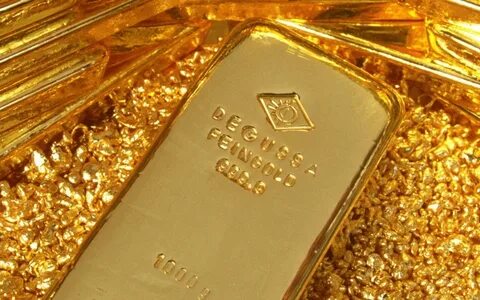Gold Price Surges as Economic Uncertainty Grows
The gold price has seen a significant surge in recent days as global economic uncertainty continues to grow. Investors are turning to the precious metal as a safe-haven asset amid turbulent financial markets and geopolitical tensions. The increase in gold price reflects the heightened concerns about the state of the global economy and the potential impact of trade disputes and political instability. As the gold price continues to climb, it is clear that investors are seeking stability and security in uncertain times.
Gold prices have surged recently as economic uncertainty has grown in response to factors such as the ongoing trade war between the US and China, geopolitical tensions, and concerns about slowing global growth. Investors often turn to gold as a safe-haven asset during times of uncertainty, driving up demand and prices. This trend is expected to continue as long as economic and geopolitical uncertainties persist.
Understanding the Fluctuating Nature of Gold Prices

Gold prices are known for their significant fluctuations in the market. Several factors contribute to these fluctuations, including economic uncertainties, changes in currency values, and geopolitical events. Additionally, the demand for gold in industries such as jewelry and technology also impacts its price.
Investors and traders closely monitor gold prices, as they can serve as a hedge against inflation and market volatility. Understanding the factors that influence gold prices can help individuals make more informed decisions when buying or selling gold. Additionally, staying informed about market trends and global events can provide valuable insights into the fluctuating nature of gold prices.
Gold Price Forecast: What to Expect in the Coming Months

Gold price forecast for the coming months suggests that the price of gold is expected to remain relatively stable in the short term. Factors such as inflation, interest rates, and geopolitical tensions will likely continue to influence the price of gold. However, some analysts predict that the price of gold may experience a slight increase in the medium to long term as global economic uncertainty persists. Additionally, demand for gold as a safe haven asset may also contribute to potential price increases in the coming months. Overall, the outlook for gold prices remains positive, with the potential for gradual gains in the near future.
The Impact of Global Events on Gold Prices

The impact of global events on gold prices can be significant. Geopolitical tensions, economic uncertainty, and fluctuating currency values can all lead investors to seek the safe-haven properties of gold, driving up its price. For example, during times of political turmoil or conflict, investors often turn to gold as a store of value, causing its price to increase. Similarly, economic downturns or currency devaluations can also lead to increased demand for gold, driving up its price. Additionally, global events such as interest rate changes, inflation, and changes in central bank policies can also affect gold prices. Overall, global events play a crucial role in influencing the supply and demand dynamics of gold, ultimately impacting its price.
Investing in Gold: How to Navigate Price Volatility

Investing in gold can be a wise choice for diversifying a portfolio and hedging against inflation. However, the price of gold can be quite volatile, so it’s important to navigate this volatility carefully. One strategy is to consider averaging into your gold positions over time, rather than making a large lump-sum investment. This can help to reduce the impact of short-term price fluctuations. Additionally, staying informed about global economic and geopolitical events can help you make more strategic decisions about when to buy and sell gold. Finally, consider consulting with a financial advisor or investment professional who can provide personalized guidance based on your individual financial goals and risk tolerance.
Analyzing Historical Trends to Predict Future Gold Prices
Analyzing historical trends to predict future gold prices involves examining past price movements, market conditions, and external factors that have influenced gold prices. This may include looking at historical price charts, economic indicators, geopolitical events, and supply and demand dynamics in the gold market. By analyzing these historical trends, analysts can identify patterns and correlations that may help to forecast potential future price movements. This can be useful for investors and traders looking to make informed decisions about buying or selling gold. However, it’s important to note that past performance is not always indicative of future results, and other unforeseen factors can also impact gold prices.
Factors That Influence the Rise and Fall of Gold Prices
See also: gold & metal detector
Some of the key factors that influence the rise and fall of gold prices include:
1. Demand and supply: Like any other commodity, the demand and supply dynamics play a crucial role in determining the price of gold. A higher demand for gold, such as during times of economic uncertainty or geopolitical tensions, can drive up prices. Conversely, a surplus of gold in the market can lead to price decreases.
2. Inflation and currency value: Gold is often seen as a hedge against inflation, as it tends to retain its value even as paper currencies lose purchasing power. Therefore, when there are concerns about inflation or a weakening currency, investors may flock to gold, driving up its price.
3. Interest rates: Gold doesn’t offer a yield or interest, so when interest rates rise, the opportunity cost of holding gold increases, as it becomes more attractive to invest in interest-bearing assets. This can lead to a decrease in demand for gold and in turn, a decline in its price.
4. Central bank policies: Central banks around the world hold significant amounts of gold as part of their reserves. Any changes in their buying or selling patterns can have a significant impact on the price of gold.
5. Economic data and market sentiment: Economic indicators such as GDP growth, unemployment rates, and consumer confidence can influence gold prices, as they provide insights into the health of the economy and impact investment decisions. Additionally, market sentiment and speculations about future events can also drive fluctuations in gold prices.
These are just a few of the many factors that can influence the rise and fall of gold prices. It’s important to note that gold is a complex and multi-faceted asset, and its price movements are the result of a combination of various global economic and geopolitical factors.
The Relationship Between Inflation and Gold Prices
The relationship between inflation and gold prices is complex and multifaceted. In general, gold is often seen as a hedge against inflation, as it tends to hold its value or increase in value during periods of high inflation. This is because the purchasing power of paper currency tends to decline during inflationary periods, while the intrinsic value of gold remains relatively stable.
When inflation is high, investors may turn to gold as a safe haven asset to preserve their wealth. This increased demand for gold can drive up its price. Conversely, during low inflation or deflationary periods, the demand for gold may decrease, leading to lower prices.
However, the relationship between inflation and gold prices is not always straightforward. Other factors, such as changes in interest rates, economic uncertainty, and geopolitical events, can also influence the price of gold. Additionally, the relationship between inflation and gold prices can vary depending on the specific economic conditions and market dynamics at any given time.
How to Make Informed Decisions When Buying Gold
Here are some tips for making informed decisions when buying gold:
1. Research the market: Understand the current price of gold and how it fluctuates over time. This will help you determine whether it’s a good time to buy.
2. Know your options: There are different forms of gold to consider, such as bullion, coins, and jewelry. Each has its own advantages and disadvantages, so be sure to research and understand what you’re buying.
3. Verify the seller: If you’re buying from a dealer, make sure they’re reputable and trustworthy. Look for reviews and ratings from other customers, and consider seeking out recommendations from friends or family.
4. Consider storage and security: If you’re buying physical gold, you’ll need a secure place to store it. Be sure to factor in the cost and logistics of storage when making your decision.
5. Understand the risks: As with any investment, buying gold carries some level of risk. Consider the potential downsides, such as market fluctuations and liquidity, before making a purchase.
By taking the time to educate yourself and carefully consider your options, you can make an informed decision when buying gold.
The Role of Demand and Supply in Gold Price Determination
The price of gold is determined by the demand and supply of the metal in the market. When the demand for gold increases, its price also goes up. This can happen due to various reasons such as economic uncertainty, geopolitical tensions, or inflation concerns. On the other hand, when the supply of gold increases, its price tends to go down. Factors that can impact the supply of gold include mining output, central bank sales, and recycling of old gold.
In addition to demand and supply dynamics, other factors such as interest rates, currency movements, and overall market sentiment can also influence the price of gold. In recent years, the price of gold has also been impacted by investment demand, as more investors turn to gold as a safe-haven asset during times of economic turmoil.
Overall, the relationship between demand and supply plays a crucial role in determining the price of gold, and understanding these dynamics is important for those looking to invest or trade in the precious metal.
Measuring the Impact of Interest Rates on Gold Prices
To measure the impact of interest rates on gold prices, researchers and analysts often use statistical methods such as regression analysis to examine the relationship between changes in interest rates and fluctuations in gold prices. By studying historical data, they can identify trends and patterns that demonstrate how movements in interest rates affect the demand for and value of gold. Additionally, economic theories such as the opportunity cost of holding gold versus interest-bearing assets can also be used to understand the relationship between interest rates and gold prices. These methods help investors and policymakers make informed decisions about gold investments based on interest rate movements.
In conclusion, the surge in gold prices reflects the growing economic uncertainty that has led investors to seek out safe-haven assets. As global markets continue to face volatility and instability, gold has emerged as a reliable hedge against the potential risks. The sustained increase in gold price signifies the ongoing demand for this precious metal as a store of value and an essential component of any diversified investment portfolio. As economic uncertainty persists, it is likely that gold price will continue to be influenced by these market dynamics.
See also
https://or.bullionvault.fr/Cours-De-L-Or.do
https://www.orobel.biz/cours-metaux-precieux/cours-or-prix-or
https://www.orencash.fr/cours-de-l-or/
https://www.veracash.com/fr/cours-or
https://www.bdor.fr/cours-or